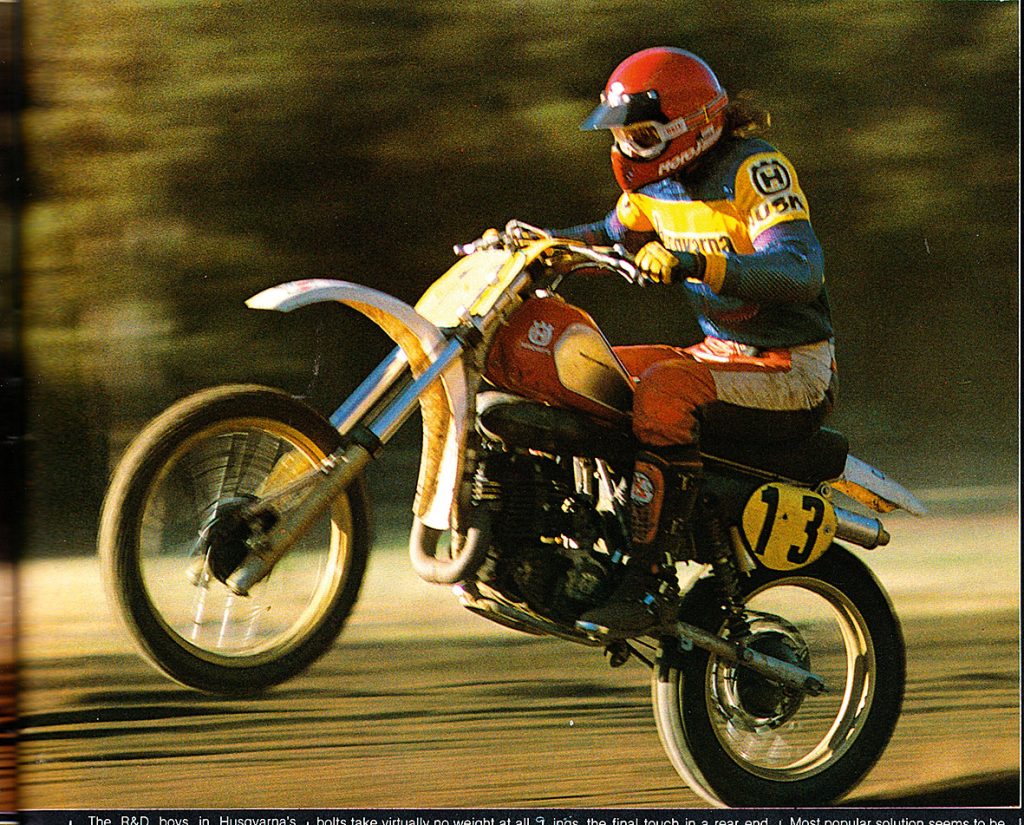A Husqvarna CR430 graced the cover of ADB #33 in January, 1982, spitting staffer Murray Watt off the back in a cloud of dust.
The 430 was an upgrade from the 390 and a few significant changes were evident other than the capacity increase.
The tank was shorter but higher, holding enough fuel for 45-minute motos but allowing the rider to slide further forward. The 40mm fork was held by two bolts in the upper triple-clamp rather than the single bolts of the 390.
Out the back the big Swede still sported twin piggyback Ohlins as they were as good as any monoshock set-up. The mounts were unusual in that the shocks sloped in towards the top and the bottom mounts were pins going through the swingarm instead of mounting on top. Heim joints in the top mounts allowed the movement necessary for the system to work without any problems. Travel was a healthy 310mm at the back and 300mm from the conventional fork, featuring new diecast sliders.
In keeping with tradition the fork leaked although it was more a thin film than a leak that old time Huskies were well known for. If an owner was prepared to experiment he could find an oil to suit his speed and riding style and they could be made to work very well.

Brakes were drums but wider than previous offerings. Tyres were Pirelli MT250 Pentacross, which replacing the Trelleborgs once synonymous with Husqvarna.
There were major changes inside the engine, although it was still fed by the same air filter and 38mm Mikuni, with a new cylinder with different porting and a new pipe to get it all out the other end. Primary kick had been added, a first for Husky. Cable maintenance was made easy by built-in lubricating inlets on the outer cable.
The competition at the time were the YZ465H, RM465X, KX420 and CR450 and while all were cheaper and a little easier to maintain, the conclusion was that a rider was prepared to put in the time to learn the bike and fine tune things, then he would be rewarded.
The CR430 got the power to the ground and, despite its slow steering figures on paper, it went around corners well. The best technique for the Husky was to carve an inside line and square off, aiming it with the aid of the engine … a skill that Muzza was still perfecting. Warren Jack
